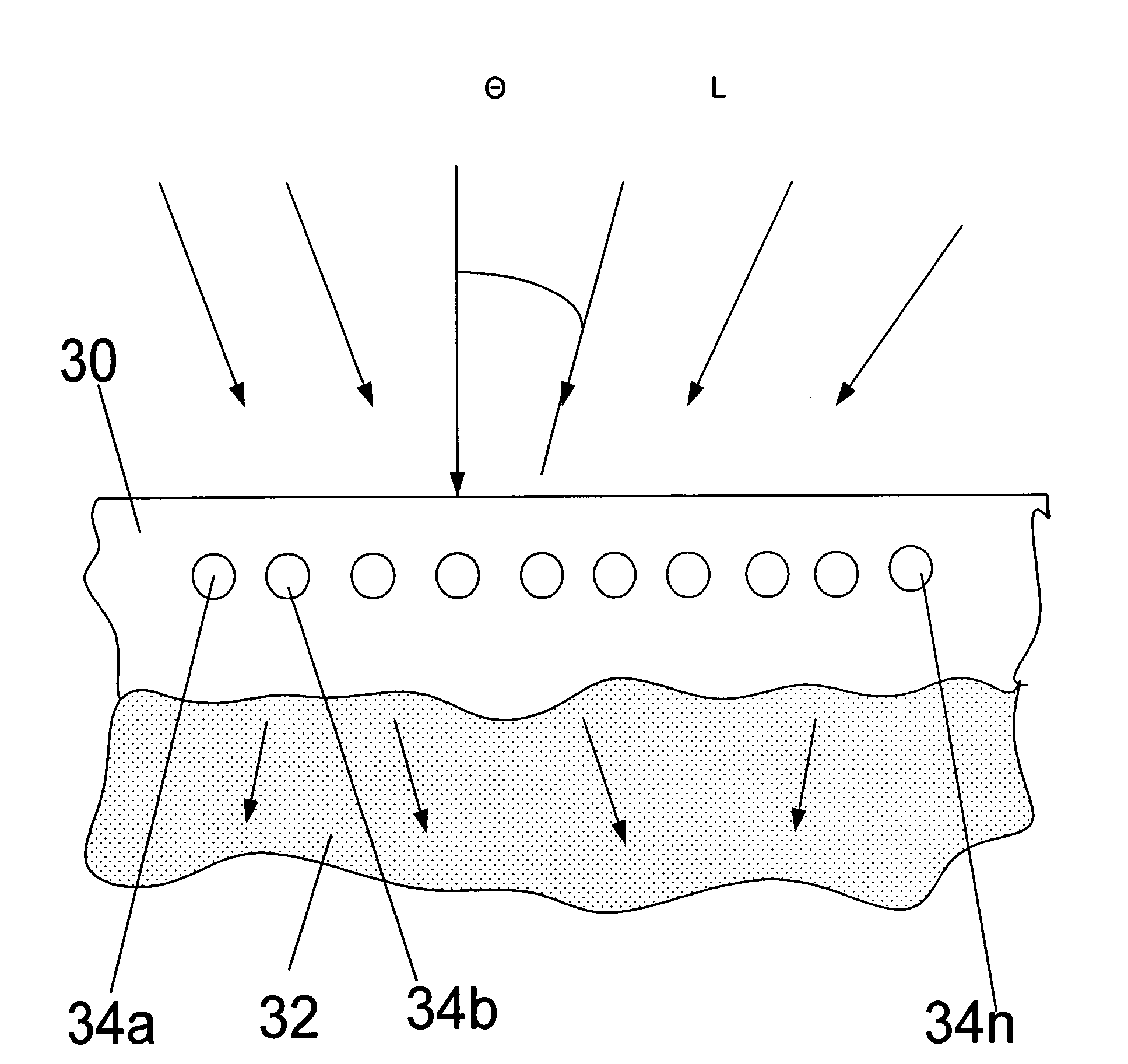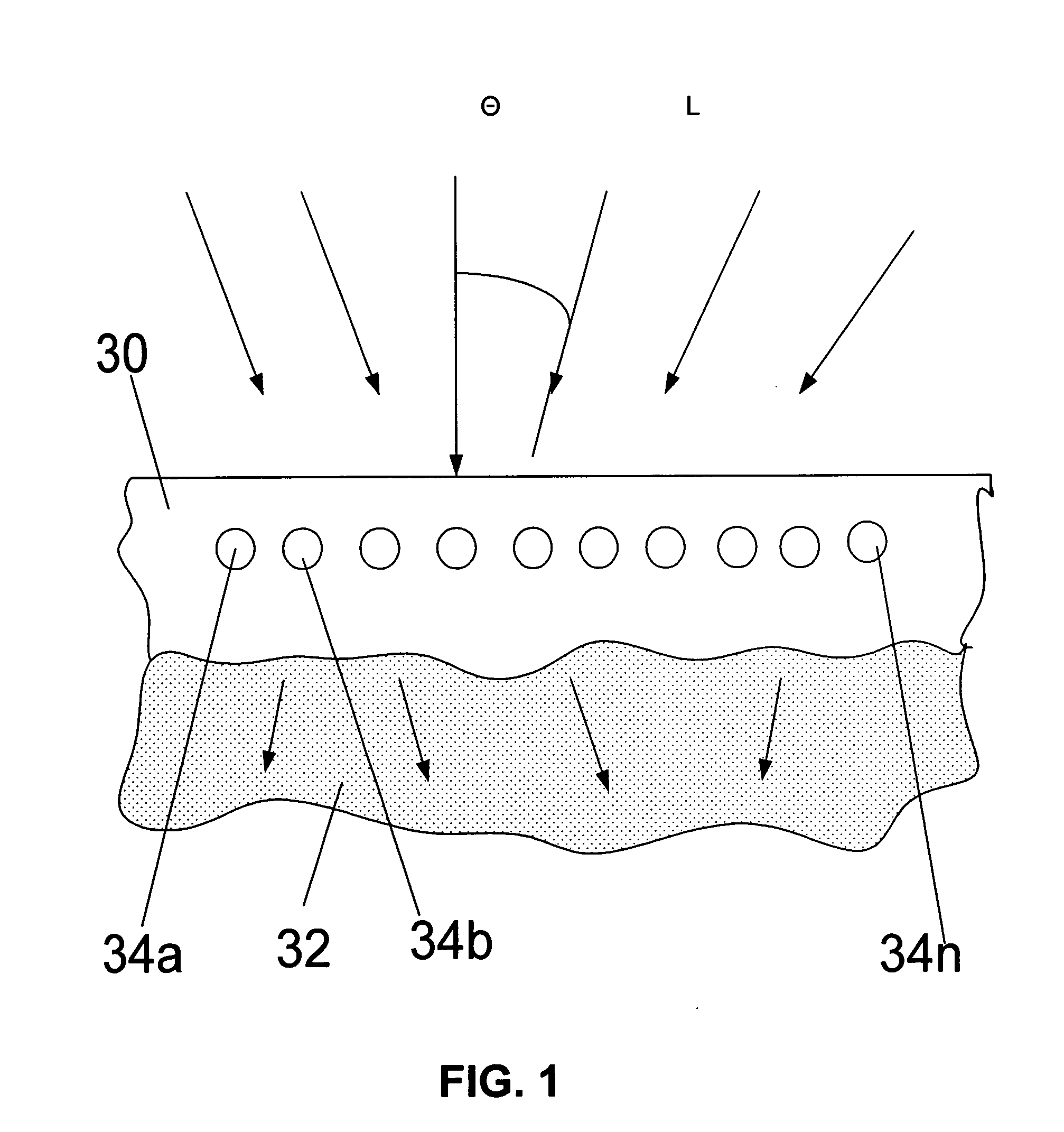Nanostructured antireflective optical coating
a technology of anti-reflective coating and nanostructure, applied in the field of optics, can solve the problems of surface reflection coefficient, real coatings cannot reach perfect performance, destructive interference and cancel each other, etc., and achieve the effect of suppressing the reflective capacity of an optical system, reducing the reflective capacity of a transparent optical medium, and minimizing the reflective capacity
- Summary
- Abstract
- Description
- Claims
- Application Information
AI Technical Summary
Benefits of technology
Problems solved by technology
Method used
Image
Examples
Embodiment Construction
[0048]FIG. 1 is a schematic view of a nanostructured antireflective optical coating 30 of the invention applied onto a body 32 of an arbitrary shape for the purpose of reducing reflective capacity of the aforementioned body 32. Symbol L designates incident light shown by the arrows.
[0049]Reference numerals 34a and 34b through 34n designate a monolayer of nanoparticles embedded in the material of coating 30 and arranged in a predetermined pattern which is described below in more detail. Nanoparticles 34a and 34b through 34n may be substantially identical and form a crystalline pattern of a predetermined symmetry. Nanoparticles can be made from various materials. The tests conducted by the inventor showed that the following materials are suitable for manufacturing nanoparticles that are capable of producing an antireflective effect: metals such as gold, silver, aluminum, copper, etc.; metal alloys of the aforementioned metals; and dielectrics such as glass nanospheres, metal oxides wi...
PUM
| Property | Measurement | Unit |
|---|---|---|
| diameters | aaaaa | aaaaa |
| angle | aaaaa | aaaaa |
| frequency | aaaaa | aaaaa |
Abstract
Description
Claims
Application Information
 Login to View More
Login to View More - R&D
- Intellectual Property
- Life Sciences
- Materials
- Tech Scout
- Unparalleled Data Quality
- Higher Quality Content
- 60% Fewer Hallucinations
Browse by: Latest US Patents, China's latest patents, Technical Efficacy Thesaurus, Application Domain, Technology Topic, Popular Technical Reports.
© 2025 PatSnap. All rights reserved.Legal|Privacy policy|Modern Slavery Act Transparency Statement|Sitemap|About US| Contact US: help@patsnap.com



